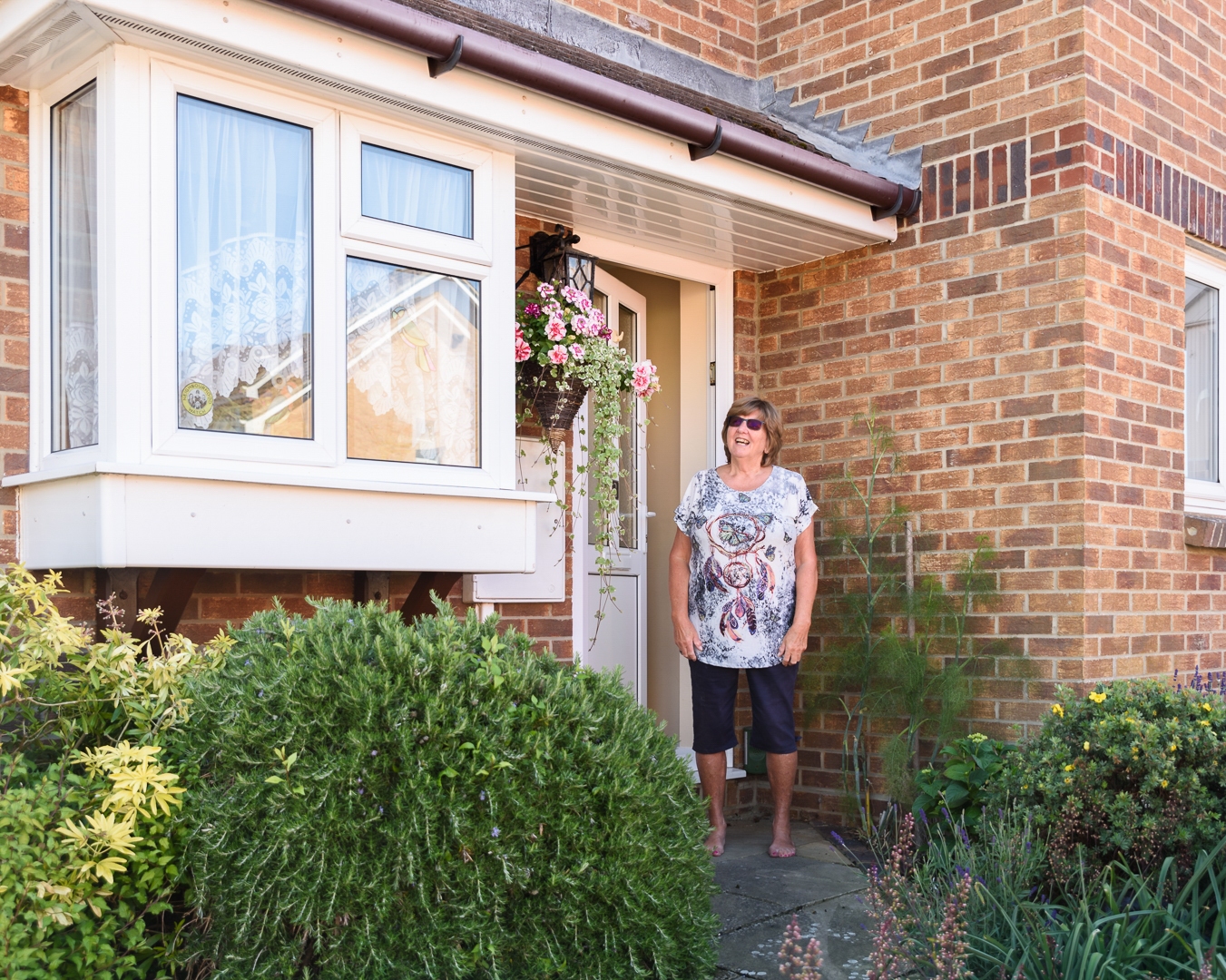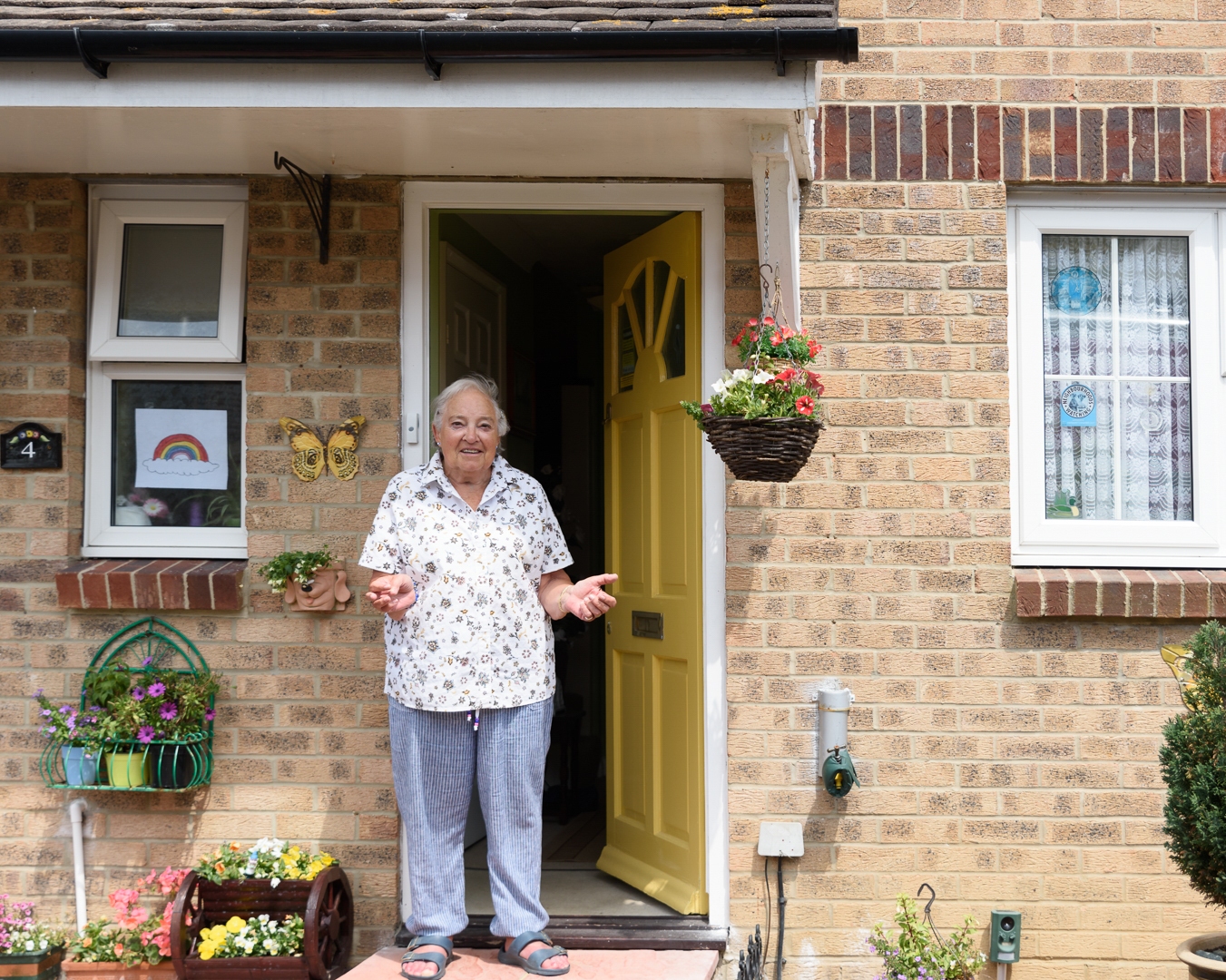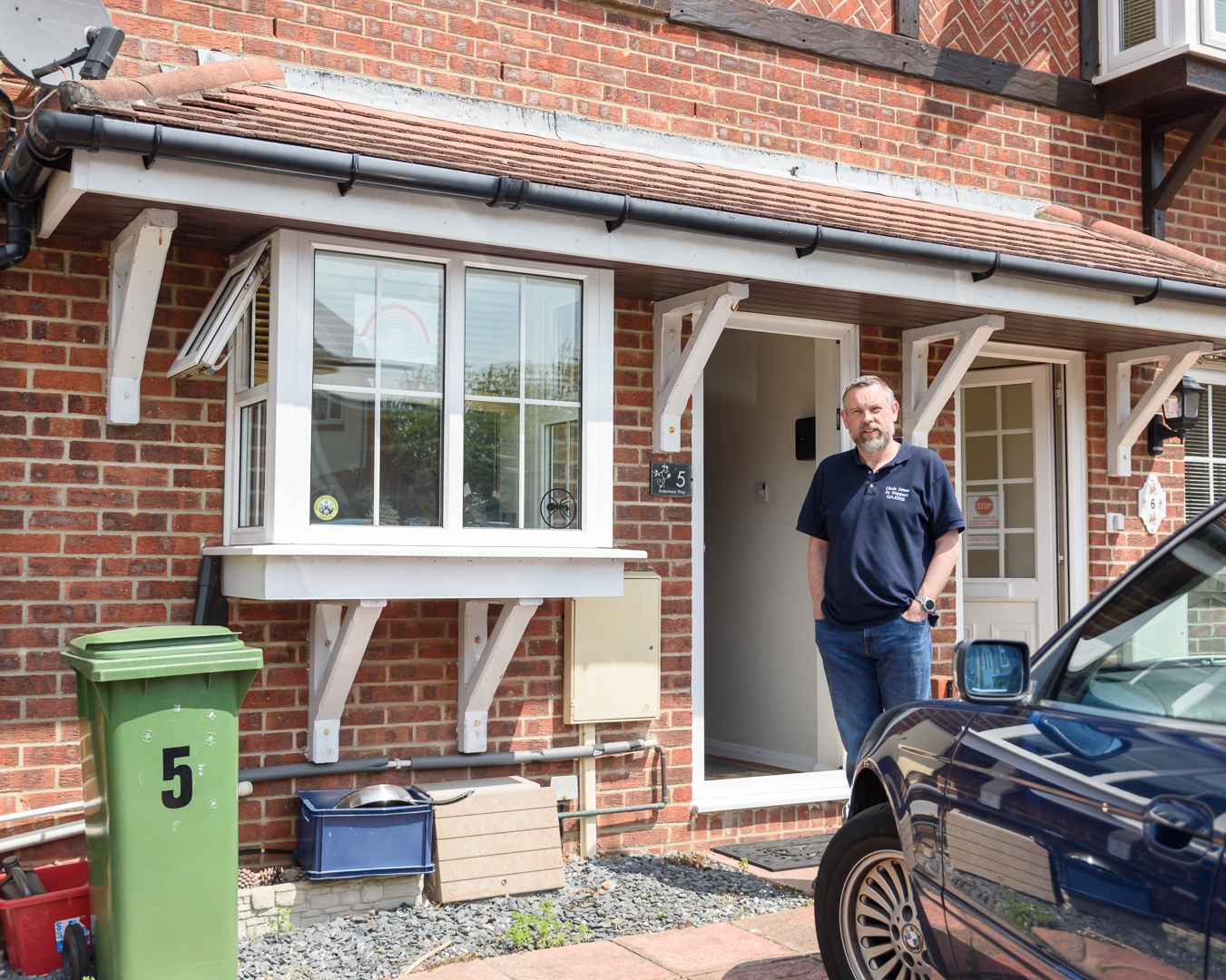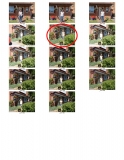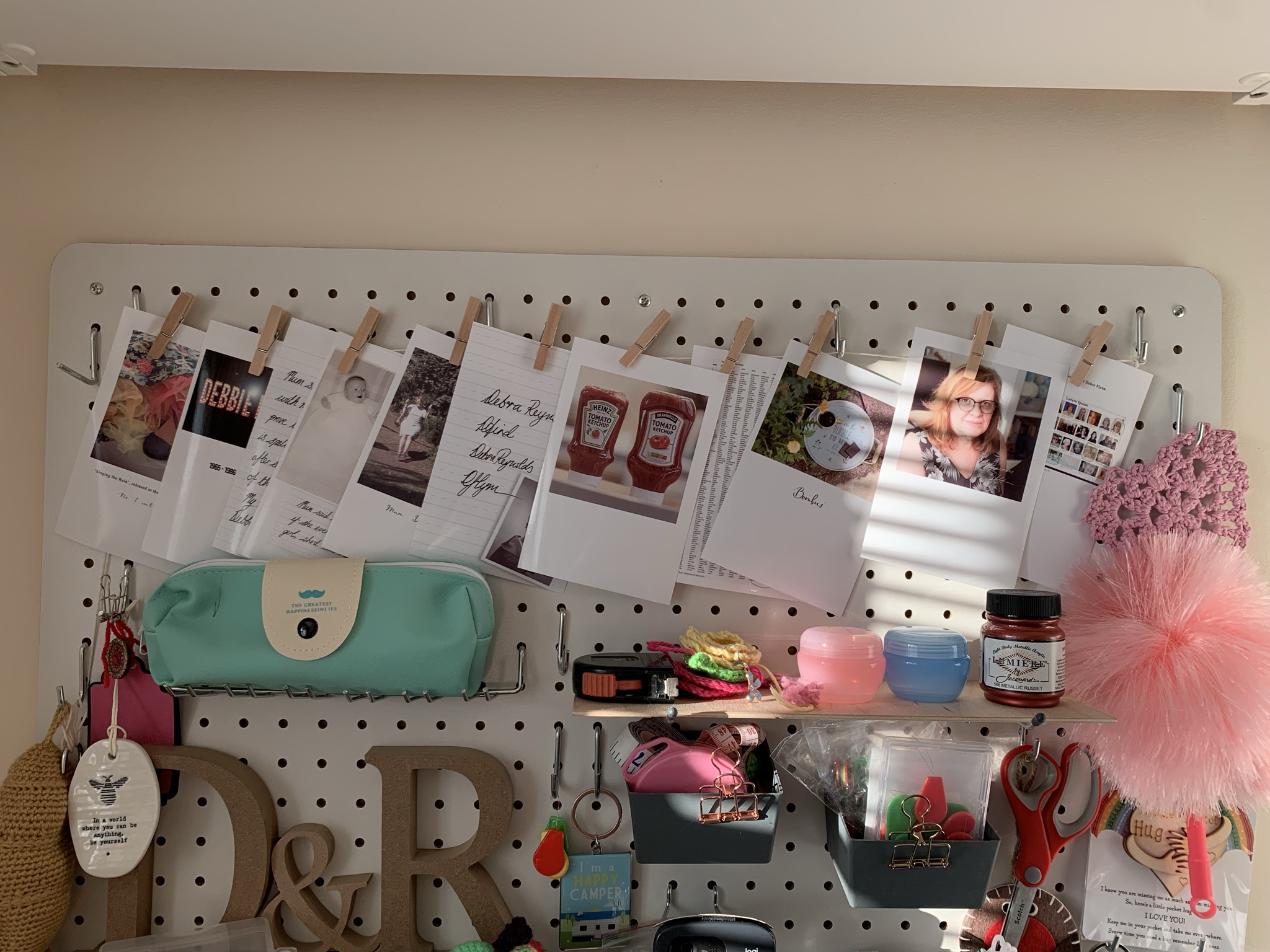Lockdown 2020
Buttermere Way, Littlehampton, West Sussex, BN17
Introduction
Littlehampton is a small coastal town on the south coast of England. Buttermere Way is a cul-de-sac in the middle of an estate built around 1989. the houses are numbered consecutively from 1 – 52. I have lived at No 19, with my husband for the past 7½ years.
ONS data from the 2011 Census (“Custom Report – Nomis – Official Labour Market Statistics”) says that the average age of people living in this area is 39, with 47% being aged between 30 and 59. The population identified as 96% white British. The majority of dwellings are classified as detached, semi-detach or terraced houses, with only 10% of residents living in flats. There were no shared dwellings. 72% of residents were in employment and 13% are retired.
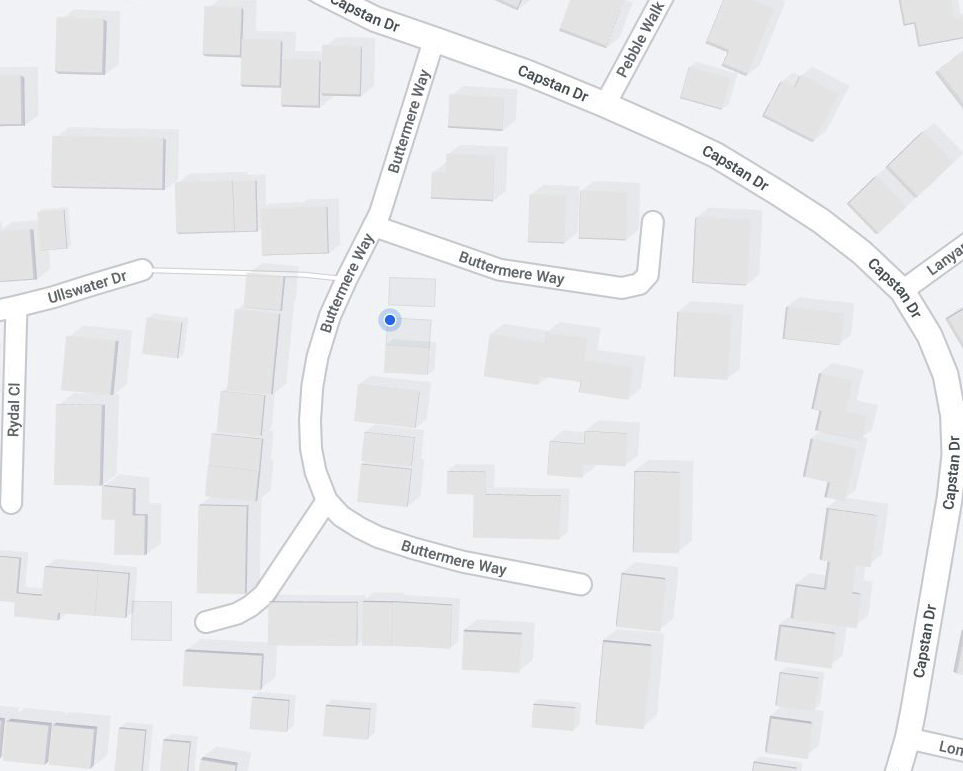
Figure 1- Buttermere Way, Street View 
Figure 2 – Buttermere Way, satellite view
On 23rd March 2020, the UK Government imposed a ‘Lockdown’ on the whole population in response to the COVID-19 Pandemic. This meant that the majority of people were asked to stay at home, and could only go out, to go to work in a key worker role, get essential shopping such as food and medicine and for medical issues or collect prescriptions. We lived with the phrase: “stay at home, protect the NHS, save lives” ringing in our ears.
Many people like myself were able to work at home, but others who could not, were furloughed. People who were particularly vulnerable to the disease were asked to ‘shield’ themselves by not leaving their homes for 12 weeks. Anyone who had Coronavirus symptoms was asked to self-isolate with their families for 14 days. A movement was started which encouraged people to come out on to their doorsteps on a Thursday night at 8:00 pm to clap for keyworkers, carers and NHS staff as a mark of thanks for their hard work saving lives and keeping us fed.
We stood on our doorsteps clapping for 10 consecutive weeks, smiling and waving at our neighbours, up and down the street. I had often smiled and said hello to passers by as I went to my car to go work, or thank someone who had taken a parcel in for me, but I didn’t really know anything about them as people at all. Who are they? What do they do? How long have they lived in the same road as me? How have they been affected by this pandemic? What are similarities and differences from me. This series will document this moment in history. The people who lived in Buttermere Way during the Coronavirus Pandemic of 2020.
In making this series, I have had the opportunity to meet and discover the interesting people, who live close to me. Due to confidentiality, it is not the intention of this study to note individual responses, although that data has been kept. It does aim to give a pictorial record of one member of the household.
To maintain a consistent theme, the portraits have been taken in a ‘documentary‘ format, showing the person looking at the camera, in front of their home. Where there is one, the house number has been included and people were asked to leave their doors open to engender a feeling of openess and welcome. Unlike August Sander‘s very formal poses of people with blank faces, images were taken during conversation so that they were relaxed and standing naturally. The camera (Nikon D810 with Tamron 24/70 mm 2.8 lens) was set on a tripod, at the same height for all of the images. The same depth of field and ISO were used throughout with speed and focal length adjusted depending on light conditions and distance. All images were taken in 5:4 format and social distancing rules were applied. By having them posed in this way, it shows that they are willing participants and not images just taken without their knowledge.
The outcome of this project, is a series of images documenting the residents of Buttermere Way during the Lockdown of 2020. This has been a voyage of discovery and a real pleasure to meet and find out about my neighbours. One lady even went to school with my sister-in-law! There are 52 houses in the street, therefore the project will be continued to capture as many of the residents as possible.
For the purposes of this Assignment, portraits of the first five residents I met have been included. However, this project is continuing with a view to documenting as many of the residents of Buttermere Way as possible. Click the button below to see the full series:
Brief
Your first assignment is to make five portraits of five different people from your local area who were previously unknown to you
Photography 1: Identity and Place, p53
Research
Research for this Assignment has taken me to a variety of photographers, such as August Sander, Martin Schoeller, Rineke Dijkstra and Clare Richardson. I chose to follow a documentary style of portrait as the person’s environment is important to the story, I want to convey.
Documentary photography is a style of photography that provides a straightforward and accurate representation of people, places, objects and events, and is often used in reportage.
(Tate, 2017)
understanding the concept of Conceptual Art coupled with the documentary style steered my approach to the images I wanted to make.
To add context to the series, I accessed Office of National Statistics (ONS) report covering the characteristics of people and households in E00160147. This added an extra level of understanding to people living and working in my street and help me describe the area in the Introduction.
Process
Image Brief: fulfils the definition of a portrait (What is the definition of portrait photography) i.e. it Captures the personality or essence of a subject, it is staged and it is made for a purpose. Image staged as: one person from a household, to be directed to stand / sit outside of their home without posing. The number of the house to be visible, door left open. Enough of the property and / or front garden to tell the viewer something about the homeowner. All images to be taken in 5:4 ratio format to allow composition to capture enough of the background to frame the person in their environment. It also appears to be a common format for portraiture.
Approach: Contact my neighbours, arrange to visit them outside of their homes and talk to them. My primary aim was to get to know my neighbours and secondly to document their residence in Buttermere Way and find out how they have been impacted by the Coronavirus pandemic Lockdown.
Technical: Nikon D810 camera with a 24/70mm 2.8 lens, to allow a wide enough angle to get the front of the house in at fairly close distance. Needed to be close enough to talk easily with the person, but also adhere to social distancing rules, i.e. >2 metres apart. The camera was mounted on a tripod, at slightly lower than head height for all images to give a consistent composition to the images. All images taken at f/4, ISO 200 with variable speed and focal point depending on lighting conditions and distance from subject.
Contacting People: Initial contact was made through the Buttermere Way FaceBook page; inviting people to help me with the project, adding a couple of example images to let people know what I was looking for. This generated 2/3 responses from neighbours in the top end of the street, i.e. numbers 2 – 10. Striking while the iron was hot, I went and took the first images the next day. Whilst visiting the neighbours who had contacted me, I was lucky enough to capture a couple of others who came out to talk whilst I was there.
Following this, I created a flyer and posted it through all the doors of half of the street. (I chose only half as I wanted to gauge the response). A copy of the leaflet can be seen here. This generated a few more contacts, which I followed up and took images of a few days later when the weather was better.
I found that setting up the camera and then engaging in conversation with my neighbours helped them relax, I held a handheld trigger in my hand whilst talking to them, and occasionally took an image during the conversation. This seemed to work well and actually I really enjoyed the conversations. I got better at asking questions the more I did.
Post Production: images were taken in RAW and processed using Adobe LightRoom. Adjustments made were:
- lens correction
- detail sharpening and noise reduction
- Camera profile set to ‘Camera Standard’
- some highlight and shadows adjustments
- cropping if necesssary
Images were reviewed and the final images selected. These were then converted to JPGs and saved. Contact Sheets are posted below.
Presentation: I have used a gallery to display the images and have ordered them in numerical order of the houses with the intention of offering a logical progression and connectedness to the images either side of it. The images are all labelled with the number of the house, the first name of person and their ‘Lockdown’ status, i.e. ‘working from home’, furloughed etc.
Reflection
I was really excited by this project, It has stretched me to reach out to people and go and talk to them. I have sought the help of others for previous assignments, but have usually relied on people I know. I think the fact that after 7 1/2 years, the reason I don’t know people I live near is because I am inherently introverted. However, that doesn’t mean I haven’t wanted to know them and this assignment and the Lockdown has come together to offer this opportunity. I did employ the use of social media rather than just walking up to them and asking, but it’s getting easier.
I have been very encouraged by the engagement I have had so far with this project and am keen to continue it and get to know more of my neighbours. My concern is that having made all this effort, I won’t be able to keep up the contact I have now made. I have also collected a lot of data about the people in order to answer my initial questions, I am unsure what to do with it or whether to include some of it in my editorial. As a social history project this may be of interest in the future, but I am conscious of people’s privacy. Furthermore, until I have concluded this project, I don’t think the data is complete.
As mentioned above, I intend to continue with this series of images to create a more complete record of the people living in this street during Lockdown. For the purposes of this assignment, I have kept it to one person per household, however, for the complete series, I am considering including couples or families.
I have created a collection in my personal website in order to keep posting new images as they are collected. This has been linked to this assignment, but I will discuss with my tutor about including the full series here. Ultimately, I would like to exhibit this series, locally, so I am bearing that in mind as I take the images.
Assessment Criteria
Context
Having decided on the theme of getting to know my neighbours to answer this brief, I have researched documentary and typology photographers, as well as portrait photographers. these images are taken in the context of the Coronavirus Lockdown of 2020 and therefore, the portraits are of people in their environment. The only typology used has been the sorting of the images by house number, although a bigger body of work, could compare the different impact of the Lockdown on individuals, such as, furloughed, working from home etc.
Demonstration of Creativity
This series, shows that I have been able to create the work, in spite of the pandemic, I have managed to get to know people and take images within the social distancing rules that currently persist. I defined my aims and used a consistent process to create a unified series of images.
Demonstration of Technical and Visual Skills
I have demonstrated that I have used my technical knowledge to:
- create these images, by selecting the right lens to create the images I wanted,
- using a tripod at the same height for all of the images, to ensure parity across the series of images.
- standing behind the camera to ensure the subjects are looking directly into it.
- using my knowledge of Adobe Lightroom, to ensure composition, colour tones, highlights and shadows to create a cohesive set of images.
Quality of Outcome
The quality of outcome is shown by the realisation of the vision. Having conceived this idea based on the constraints of the current Lockdown, engaging with people previously unknown to me and the production of a series of coherent and composed images that tell the story, I had envisioned.
Works Cited / References
“Custom Report – Nomis – Official Labour Market Statistics.” Nomisweb.Co.Uk, 2011, www.nomisweb.co.uk/reports/localarea?compare=E00160147. Accessed 12 June 2020.
“Harlemville – Clare Richardson.” Clare Richardson, 2019, www.clarerichardson.com/books/book-harlemville/. Accessed 13 June 2020.
“How To/Techniques: The Documentary Portrait – Insights.” Arts.Ac.Uk, 2020, insights.arts.ac.uk/how_to/documentary-portrait-no-1/. Accessed 13 June 2020.
“Labour Market Profile – Nomis – Official Labour Market Statistics.” Nomisweb.Co.Uk, 2011, www.nomisweb.co.uk/reports/lmp/ward2011/1140856679/report.aspx. Accessed 12 June 2020.
Tate. “Documentary Photography – Art Term | Tate.” Tate, 2017, www.tate.org.uk/art/art-terms/d/documentary-photography. Accessed 13 June 2020.
—. “Documentary Photography – Art Term | Tate.” Tate, 2017, www.tate.org.uk/art/art-terms/d/documentary-photography#:~:text=Documentary%20photography%20is%20a%20style,on%20the%20bed%2C%20NYC%201982. Accessed 13 June 2020.
—. “‘Julie, Den Haag, Netherlands, February 29 1994’, Rineke Dijkstra, 1994 | Tate.” Tate, 2010, www.tate.org.uk/art/artworks/dijkstra-julie-den-haag-netherlands-february-29-1994-p78097. Accessed 13 June 2020.
—. “Rineke Dijkstra Born 1959 | Tate.” Tate, 2017, www.tate.org.uk/art/artists/rineke-dijkstra-2666. Accessed 6 June 2020.
Victoria. “Contemporary Documentary Photographers – Victoria and Albert Museum.” Vam.Ac.Uk, 2016, www.vam.ac.uk/content/articles/c/contemporary-documentary-photographers/?gclid=EAIaIQobChMIgJiOu7z_6QIVGO3tCh01PQItEAAYASAAEgL6_PD_BwE. Accessed 13 June 2020.
